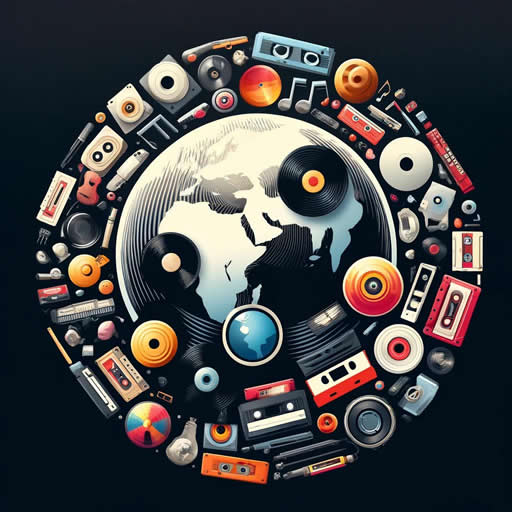The Evolution of Jukebox Machines
The jukebox has long been a symbol of music, entertainment, and nostalgia. From its humble beginnings as a mechanical marvel to the high-tech digital models of today, jukeboxes have evolved dramatically over the years. This article takes you on a journey through time, exploring the fascinating history of jukeboxes and how they’ve adapted to changing technologies and music trends.
Early Beginnings: The Coin-Operated Phonograph
The story of the jukebox begins in the late 19th century with the invention of the coin-operated phonograph. In 1889, Louis Glass and William S. Arnold introduced the “Nickel-in-the-Slot” machine. It was a modified Edison phonograph that played recordings when a coin was inserted. This early version of the jukebox could only play one song at a time through a stethoscope-like listening tube.
Key Features:
- Early jukeboxes were manually operated.
- They used wax cylinders to play music.
- Public spaces such as saloons and arcades were common locations for these machines.
Although rudimentary by today’s standards, these early machines laid the groundwork for future innovations.
The Golden Age: 1930s-1950s
The true “Golden Age” of jukeboxes began in the 1930s, when they underwent significant technological and aesthetic advancements. The introduction of the electric amplifier allowed for a louder and clearer sound, and manufacturers like Wurlitzer, Seeburg, and Rock-Ola began producing machines that became cultural icons.
During this time, jukeboxes became popular in diners, bars, and other public venues. Their bright, colorful designs and illuminated panels attracted attention, while their ability to play multiple records at the push of a button revolutionized music access.
Notable Developments:
- 78 RPM vinyl records replaced wax cylinders.
- Machines could store and play several records, allowing users to select from a variety of songs.
- Jukeboxes became a staple of American pop culture, symbolizing the rise of rock ‘n’ roll and youth culture.
The 1960s-1980s: Transition to Modern Formats
As the decades rolled on, jukeboxes continued to evolve in both form and function. The 45 RPM vinyl record became the industry standard in the 1960s, enabling jukeboxes to store even more songs in a compact format. During this time, jukeboxes reflected the musical trends of the era, from rock ‘n’ roll to disco, and found a place in an even wider variety of venues.
By the 1980s, compact discs (CDs) began to replace vinyl records. CD jukeboxes offered superior sound quality and allowed users to skip directly to their favorite tracks, making them more user-friendly. Manufacturers like Rowe and Seeburg led the transition to CD technology, keeping jukeboxes relevant in a fast-changing world.
Key Changes:
- Jukeboxes switched from vinyl to CD, expanding the song selection capabilities.
- Digital interfaces allowed for easier song selection.
- The design of jukeboxes shifted toward more streamlined, futuristic looks.
The Digital Era: Jukeboxes in the 21st Century
As digital technology began to dominate the music industry, jukeboxes adapted once again. Modern jukeboxes are now equipped with internet connectivity, touch screens, and the ability to play millions of songs through streaming services. These digital jukeboxes have redefined how we interact with music, offering endless possibilities for song selection without the need for physical media.
Modern Jukebox Features:
- Internet connectivity for access to online music libraries.
- Touchscreen interfaces for ease of use.
- Customizable playlists and integration with streaming platforms like Spotify.
While the technology has changed, the charm of the jukebox remains. Many collectors still seek out vintage models for their unique aesthetic and nostalgic value, while modern businesses opt for sleek digital versions to cater to today’s on-demand music culture.
Collecting Jukeboxes: A Blend of Nostalgia and Technology
For collectors, jukeboxes represent a tangible piece of music history. Vintage models, particularly those from the 1930s to the 1960s, are highly sought after for their iconic designs and historical significance. Restoring and maintaining these machines has become a popular hobby among enthusiasts.
If you’re interested in starting your own jukebox collection, it’s essential to be aware of common pitfalls. This guide on mistakes to avoid when buying a jukebox machine will help you make an informed purchase and avoid common traps that new buyers often fall into. Additionally, you can explore jukeboxes for sale to find both vintage and modern models that suit your tastes.
The Timeless Appeal of the Jukebox
The jukebox has undergone remarkable transformations, from coin-operated phonographs to digital music hubs. Yet, despite these technological advances, its core appeal remains unchanged. Jukeboxes continue to offer a unique way to experience music, bringing people together through shared soundtracks. Whether you’re a collector of vintage machines or looking for a digital model to enhance your space, jukeboxes remain a timeless symbol of musical enjoyment.
